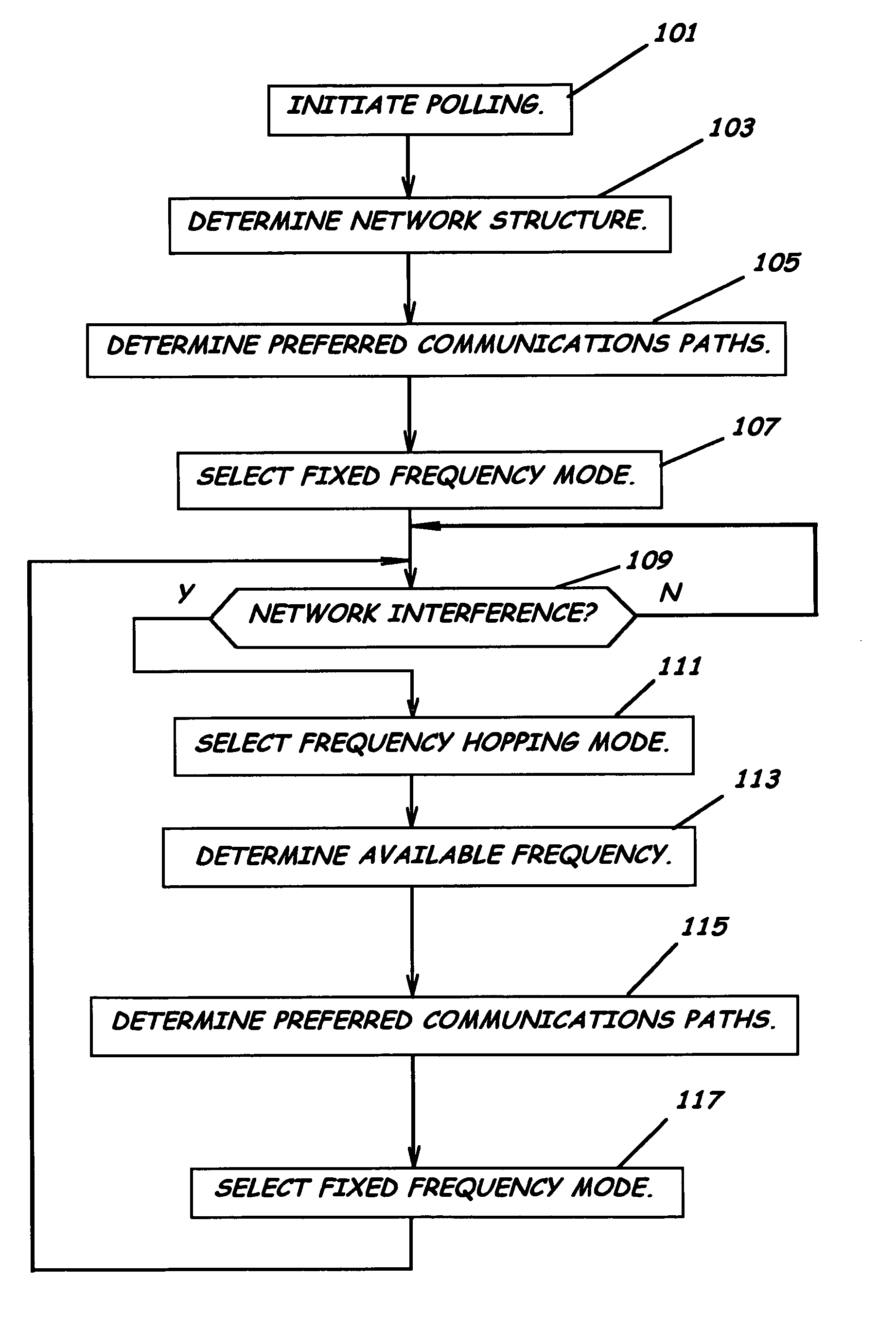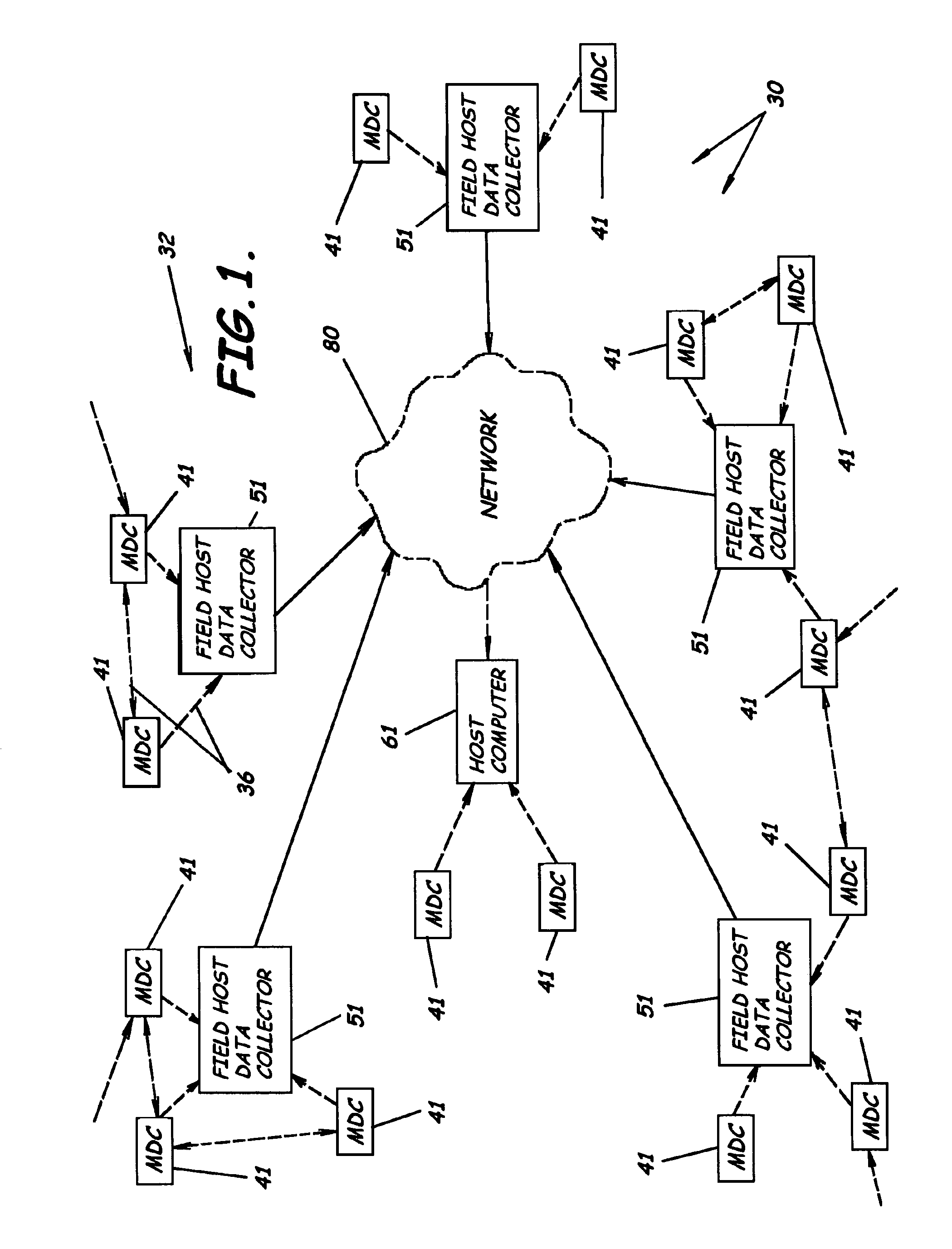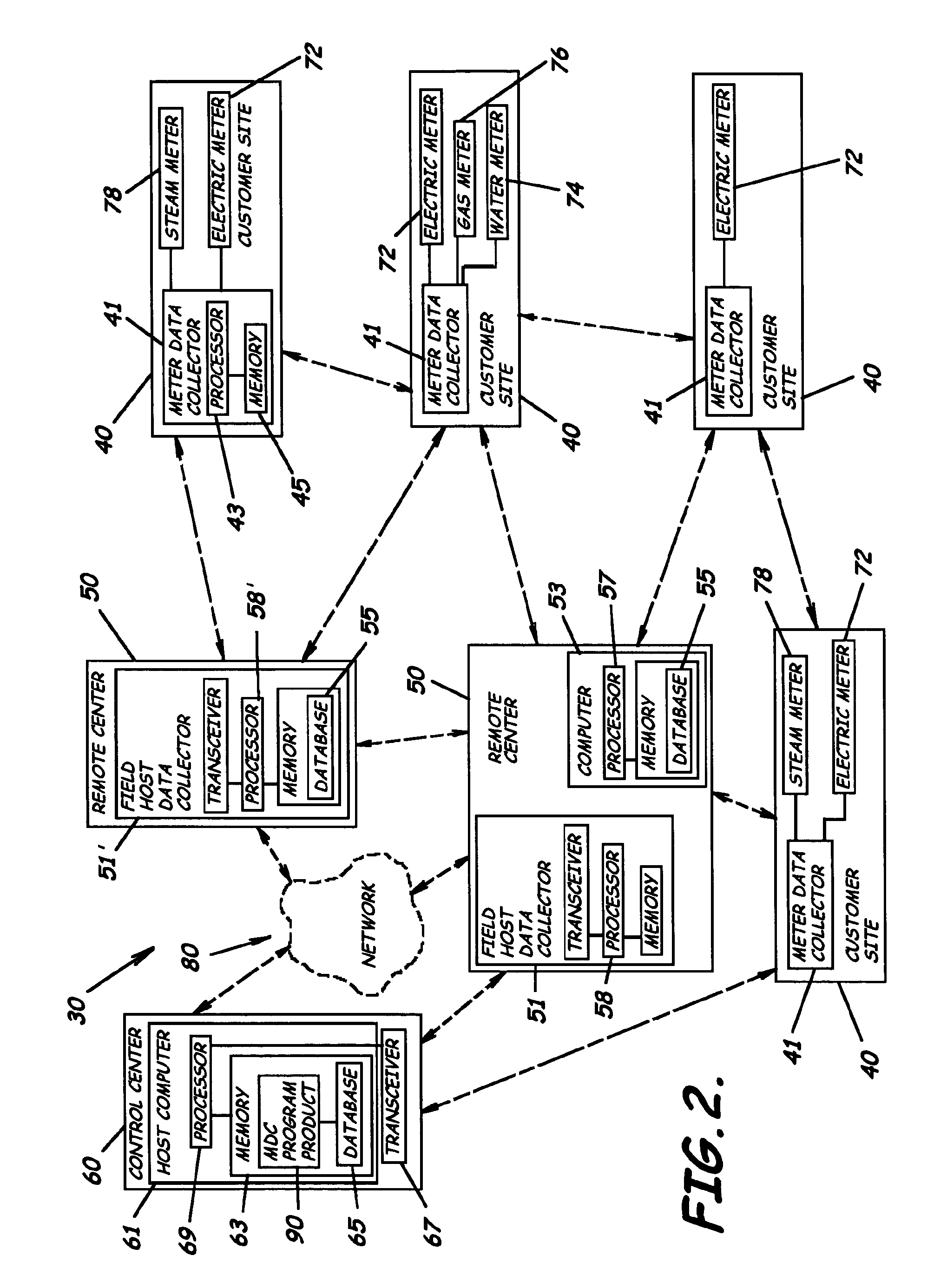Automated meter reading system, communication and control network for automated meter reading, meter data collector program product, and associated methods
a technology for automatic meter reading and meter data collection, applied in the field of automatic meter reading system, communication and control network for automated meter reading, and associated methods, can solve the problems of burdened with labor intensive and cumbersome tasks, time-consuming, and laborious, and achieve the effects of enhancing network performance, minimizing network congestion, and enhancing network performan
- Summary
- Abstract
- Description
- Claims
- Application Information
AI Technical Summary
Benefits of technology
Problems solved by technology
Method used
Image
Examples
Embodiment Construction
[0047]The present invention will now be described more fully hereinafter with reference to the accompanying drawings, which illustrate embodiments of the invention. This invention may, however, be embodied in many different forms and should not be construed as limited to the illustrated embodiments set forth herein. Rather, these embodiments are provided so that this disclosure will be thorough and complete, and will fully convey the scope of the invention to those skilled in the art. Like numbers refer to like elements throughout. The prime notation, if used, indicates similar elements in alternative embodiments.
[0048]As illustrated in FIGS. 1-11, embodiments of the present invention incorporate an automated meter reading network system 30 that advantageously provides for both automated data acquisition and energy management. Generally, the automated meter reading network system 30 can support bi-directional communications with a network of meter data collectors 41 with the capabil...
PUM
 Login to View More
Login to View More Abstract
Description
Claims
Application Information
 Login to View More
Login to View More - R&D
- Intellectual Property
- Life Sciences
- Materials
- Tech Scout
- Unparalleled Data Quality
- Higher Quality Content
- 60% Fewer Hallucinations
Browse by: Latest US Patents, China's latest patents, Technical Efficacy Thesaurus, Application Domain, Technology Topic, Popular Technical Reports.
© 2025 PatSnap. All rights reserved.Legal|Privacy policy|Modern Slavery Act Transparency Statement|Sitemap|About US| Contact US: help@patsnap.com



